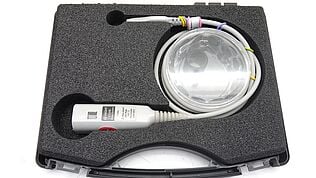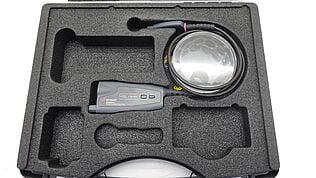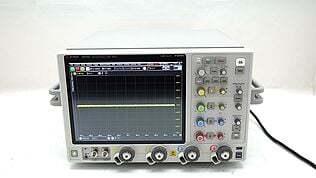- Introduction
- Understanding Digital Channels
- Characteristics of Digital Channels
- Discrete Signal Transmission
- Advantages Over Analog Channels
- Limitations
- Additional Considerations
- Applications in Electronics
- Communication Systems
- Computer Systems
- Industrial and Consumer Electronics
- Additional Application Areas
- Working with Digital Channels
- Oscilloscopes and Digital Channels
- Using Digital Channels in Testing
- Troubleshooting
- Signal Integrity
- Digital vs. Analog Channels
- Conclusion
- Whenever You’re Ready, Here Are 5 Ways We Can Help You
In an era where the majority of our communication and data processing occurs through digital means, the importance of digital channels in electronics cannot be overstated.
From smartphones to satellites, digital channels form the backbone of modern technology, making them a fundamental component in the electronics industry.
Understanding Digital Channels
Digital channels in electronics refer to the pathways through which digital signals are transmitted. Unlike analog channels, which carry signals in a continuous waveform, digital channels transmit data in discrete bits, typically represented by binary digits (0s and 1s).
In today's electronic landscape, digital channels are crucial. They provide a more reliable and efficient means of transmitting data, especially in environments with electronic noise and interference.
| Key Takeaway |
|---|
| Digital channels are crucial in modern electronics for their ability to transmit data with high accuracy and minimal interference. This makes them essential for reliable communication and efficient processing across a wide range of applications. |
Browse Our Selection of Used Oscilloscopes
Characteristics of Digital Channels
Digital channels have distinct characteristics that set them apart from analog channels, defining their functionality and applications in modern electronics.
Discrete Signal Transmission
- Binary data: At the heart of digital channels is the transmission of information in binary form. Each bit of data is represented as either a 0 or a 1, which translates into electrical signals of different levels.
- Pulse Code Modulation (PCM): PCM is a widely used method in digital communication systems. It involves sampling analog signals at regular intervals and quantizing them into a series of bits. This process is fundamental in converting analog signals (like voice or video) into a digital format for transmission and storage.
Advantages Over Analog Channels
- Higher accuracy and reliability: Digital channels significantly reduce the risk of signal degradation and noise interference, especially over long distances. This results in a more accurate and reliable transmission of data.
- Easier storage and transmission: Digital data benefits from being highly compressible, allowing for more efficient storage and faster transmission rates. This efficiency is a key factor in the vast storage capabilities of modern digital systems and the speed of internet communications.
Limitations
- Bandwidth requirement: Digital channels generally need higher bandwidth compared to analog channels. This is due to the larger volume of data being transmitted, especially with high-definition content and complex digital signals.
- Complexity: The design and operation of digital systems are often more complex than analog systems. This complexity comes from the need to process binary data, error-checking mechanisms, and the integration of sophisticated digital signal processing algorithms.
Additional Considerations
- Signal processing needs: Digital channels require intricate signal processing algorithms to encode, decode, compress, and decompress the data. This need for advanced processing techniques requires powerful processors and specialized hardware.
- Error detection and correction: One significant aspect of digital channels is their ability to include error detection and correction mechanisms. Techniques such as parity checks, checksums, and more complex algorithms like Reed-Solomon codes help in identifying and correcting errors that might occur during the transmission of data.
- Compatibility and standards: Digital channels must adhere to specific standards and protocols to ensure compatibility between different devices and systems. Standards like USB for data transfer, HDMI for audio-visual signals, and various wireless communication protocols (like Bluetooth and Wi-Fi) are examples of how digital channels are standardized for universal compatibility.
Digital channels, with their ability to transmit data reliably and efficiently, are central to the functionality of modern electronic devices and communication systems. However, the benefits come with challenges such as higher bandwidth requirements and increased system complexity. Understanding these characteristics is crucial for professionals working with digital technologies in various capacities.
Applications in Electronics
Digital channels play a pivotal role in various sectors of the electronics industry. Their ability to transmit data efficiently and reliably makes them indispensable in numerous applications.
Communication Systems
- Cell phones: Digital channels are the foundation of mobile communication, enabling voice, text, and data transfer over cellular networks. They facilitate not only traditional communication but also high-speed internet access and multimedia messaging.
- Satellite communications: In satellite communications, digital channels are used to transmit data from earth stations to satellites and back. This includes television broadcasting, GPS signals, and satellite internet services.
- Internet technology: The internet, a global network of interconnected digital channels, transmits vast amounts of data every second. Digital channels allow high-speed data exchange that powers everything from email and web browsing to cloud computing and online gaming.
Computer Systems
- Microprocessors: At the heart of every computer, microprocessors use digital channels to communicate with other components, such as memory and input/output devices. They process digital data by executing instructions and managing data flow.
- Peripheral devices: Digital channels connect peripheral devices like keyboards, mice, printers, and external storage to computers. Interfaces like USB, HDMI, and Thunderbolt rely on digital channels for fast and efficient data transfer.
Industrial and Consumer Electronics
- Smart home devices: In the realm of smart home technology, digital channels facilitate communication between devices like smart thermostats, security cameras, and voice assistants. They allow these devices to connect to home networks and the internet for remote control and monitoring.
- Automotive electronics: Modern vehicles are equipped with numerous digital channels that allow communication between electronic control units (ECUs). These channels manage everything from engine performance and braking systems to infotainment and navigation.
- Industrial automation systems: In industrial settings, digital channels are fundamental in automation and control systems. They allow for the precise control of machinery, real-time monitoring of processes, and data exchange between various sensors and control units.
Additional Application Areas
- Healthcare equipment: Digital channels are crucial in medical devices like MRI machines, patient monitoring systems, and diagnostic equipment. They ensure accurate data capture, processing, and transmission, which is vital for patient care and medical research.
- Consumer electronics: In the realm of consumer electronics, digital channels are used in everything from digital cameras and gaming consoles to televisions and audio systems. They facilitate the delivery of ultra-high-resolution media and advanced interactive experiences.

Working with Digital Channels
Digital channels are not just theoretical constructs; they are practical tools that engineers and technicians work with daily, especially in the realms of testing and system design.
Oscilloscopes and Digital Channels
Oscilloscopes often incorporate multiple digital channels. These channels are essential for capturing and analyzing the behavior of digital signals within a circuit or system.
Key Functions of Digital Channels in Oscilloscopes:
- Waveform visualization: They provide a visual representation or waveform of digital signals, allowing engineers to observe the exact shape and timing of the signal.
- Multi-channel analysis: Modern oscilloscopes can simultaneously monitor several digital channels, enabling the comparison and analysis of multiple signals or data streams.
- Digital signal decoding: Some oscilloscopes offer advanced features like decoding serial protocols (e.g., I2C, SPI, UART), making it easier to analyze communication between digital components.
Using Digital Channels in Testing
Signal Capture
- Digital signal sampling: Digital channels in oscilloscopes capture digital signals by sampling them at regular intervals. This is crucial for reconstructing the signal for analysis.
- High-speed data capture: They are capable of capturing high-speed digital signals, a necessity for testing modern digital communication systems and high-speed data links.
Analysis
- Signal integrity assessment: Engineers use digital channels to assess the quality of digital signals. This includes checking for issues like jitter, noise, and signal distortions.
- Timing and protocol analysis: Timing is critical in digital systems. Digital channels help in analyzing the timing relationships between different signals and ensuring that communication protocols are adhered to.
Troubleshooting
- Identifying communication errors: Digital channels are instrumental in pinpointing errors in digital communication lines, such as misplaced or distorted data packets.
- System debugging: They assist in debugging digital systems by allowing engineers to observe the behavior of the system under various conditions.
Signal Integrity
- Minimizing interference: Ensuring signal integrity involves designing circuits and systems that minimize interference and crosstalk between digital channels.
- Reflection and termination: Proper termination techniques are employed to prevent signal reflections, which can degrade signal integrity in digital channels.
Digital vs. Analog Channels
| Feature | Digital Channels | Analog Channels |
| Signal Type | Binary (0s and 1s) | Continuous Waveform |
| Noise Immunity | High | Low to Moderate |
| Bandwidth | Generally Higher | Lower |
| Complexity | More Complex Systems | Simpler Systems |
| Application | Digital Electronics, Computing | Audio, Radio Frequencies |
Empower Your Projects With a Used Keysight Oscilloscope
Select up to 3 instruments to compare
Enable Notifications
In order to use this feature, you need to enable notifications.
Manage notification preferences
Conclusion
Digital channels are essential in modern electronics, providing an efficient means of data transmission. Their ability to handle large amounts of data with high accuracy and minimal interference makes them a preferred choice in various applications, from communication systems to industrial automation.
As technology continues to evolve, the role of digital channels in electronic systems is likely to grow even more significant, solidifying their place as a key component in the field of electronics.
For professionals and enthusiasts in electronics who require high-quality testing and measurement equipment, Keysight Used Equipment Store offers an excellent selection of premium used oscilloscopes, spectrum analyzers, function generators, and multimeters.
These tools are essential for anyone looking to work with digital channels effectively. Visit the Keysight Used Equipment Store to explore a range of reliable, high-performance instruments that meet your testing needs.

Whenever You’re Ready, Here Are 5 Ways We Can Help You
- Browse our Premium Used Oscilloscopes.
- Call tech support US: +1 800 829-4444
Press #, then 2. Hours: 7 am – 5 pm MT, Mon– Fri - Talk to our sales support team by clicking the icon (bottom right corner) on every offer page
- Create an account to get price alerts and access to exclusive waitlists.
- Talk to your account manager about your specific needs.








































